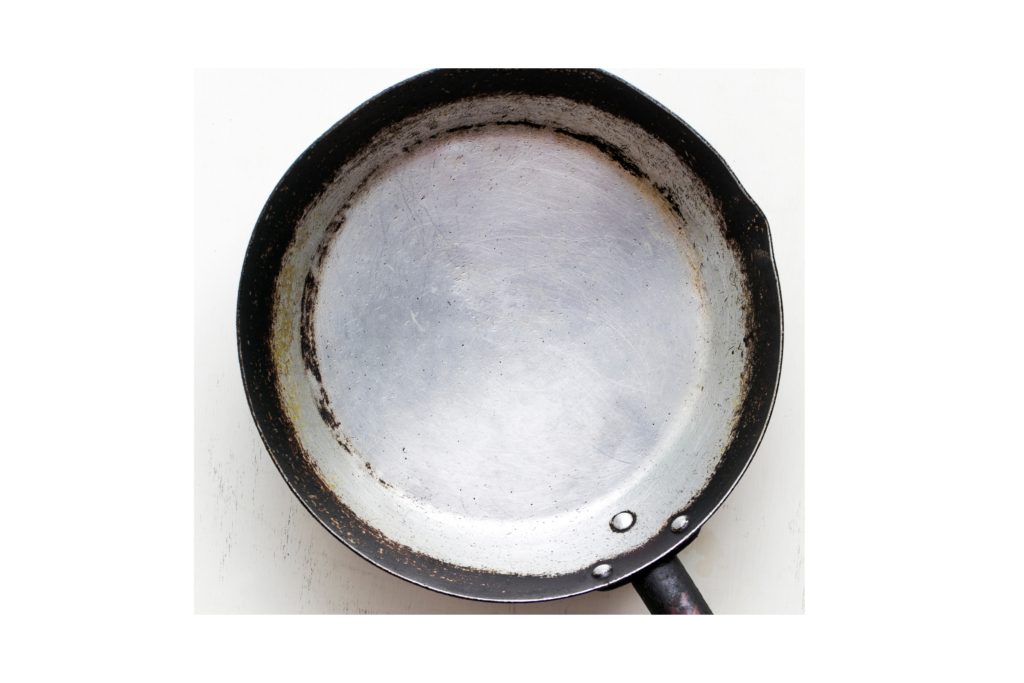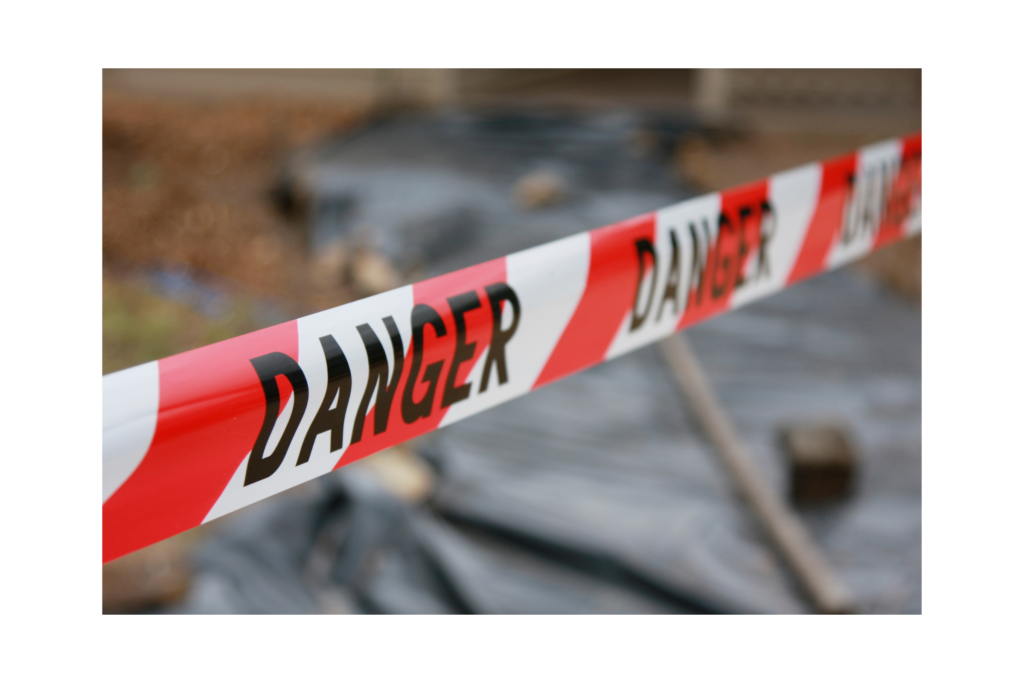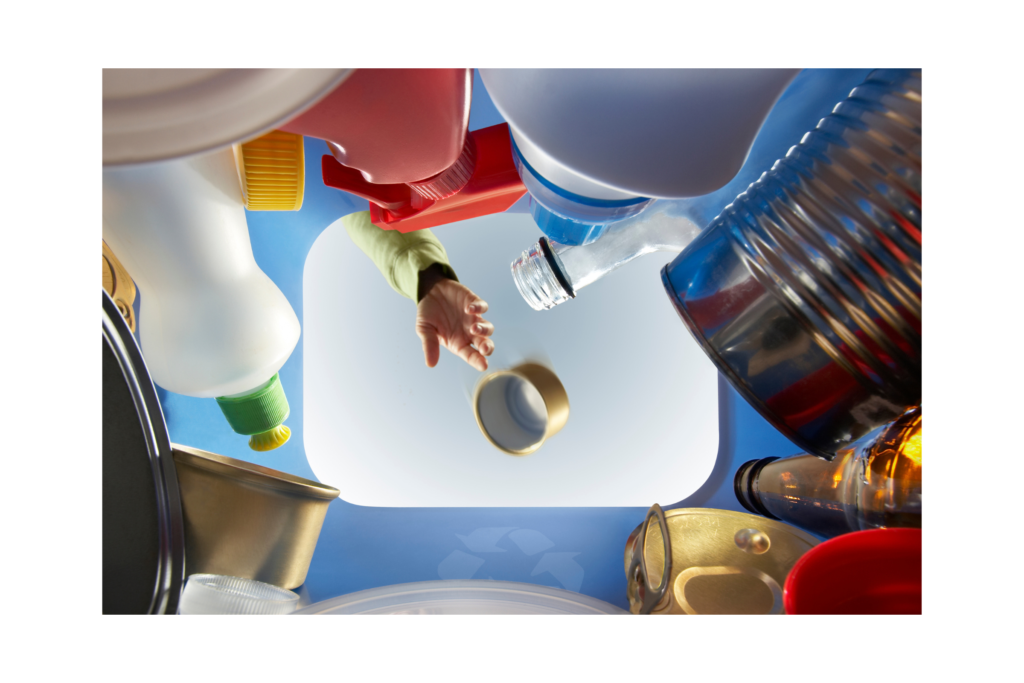What to Do With Scratched Teflon Pans? (Advice and 3 Sizzling Options)
You wake up craving a big breakfast of scrambled eggs and pancakes. You pull out your trusty nonstick pan only to notice scratches. You have a big decision to make. Starve or continue? What to do with scratched Teflon pans? Do you still use them or seek out alternatives? We will answer these questions and more!
Official Teflon-coated pans have been around for 60 years and revolutionized the cooking of foods known to stick easily. Teflon is made from polytetrafluoroethylene(PTFE), a high-performance fluoropolymer. This special coating provides a slick nonstick surface so troublesome foods can be cooked without high amounts of butter or oil. With frequent use or mistreatment, the coated surface can get scratched.
If you leave behind half of your food every time you cook, you are in the market for a nonstick pan. Oil spray and butter can only get you so far, plus they add unwanted calories and fat to your food. Users love the convenience and presentation results Teflon pans provide but often find these types of pans scratch easily.
Is there a way to fix scratched pans? Should you throw them away?
Read on to learn what you can do about scratched Teflon pans and how to prevent this problem.

What are nonstick pans?
The material we know as Teflon today was an accidental discovery. During a refrigeration experiment at DuPont Laboratories in 1938, scientist, Jack Plunkett, scraped this novel polymer out of a container. He knew this experiment byproduct could be used for something useful. After being used effectively in vehicle manufacturing, polytetrafluoroethylene was trademarked under the Teflon name in 1945.
Teflon wasn’t used as a pan coating until the 1950s when a French engineer and his wife had the idea to adhere the polymer to aluminum pans. Their experiment was so successful, they started the T-Fal corporation and revolutionized cooking. By 1960, these nonstick pans were the rage in America because the slick surface enhanced the ease of cooking.
Today, nonstick pans are marketed by many companies around the world, and most kitchens have one or two stacked in cabinets. While the nonstick surface is fantastic for sticky foods, it can pose problems over use and time.
Teflon pans don’t last forever because the coating can become scratched or start peeling. Scratches are common when using metal cooking utensils or using rough treatment during washing and storing. If you notice wear on the surface of your nonstick pans, is there anything you can do to salvage them? Yes!
Let’s look at what to do with scratched Teflon pans.
Is there a way to fix scratched Teflon pans?
If you have a scratched Teflon pan, you are in good company. The upside of nonstick-coated pans is the ease of cooking. The downside is the ease of destruction.
The scratch problem is so common that companies developed a fix for it. It is possible to recoat scratched pans if they aren’t too far gone, but this means sending them back to the manufacturer or one of their authorized dealers.
Pans are expensive, so recoating might be cheaper than buying a new set as long as your pan is in otherwise good condition. If your pans have minimal scratches but seem to be losing the non-stick element, you can take simple steps to re-season your pan. Let’s look at the popular at-home and outside fixes for scratched Teflon pans.
1. At-home fix
Before you box up your pans, you might want to try an at-home fix first. You can re-season a nonstick pan similar to the way you season cast iron. This fix is helpful if your pan has just a few scratches. It requires materials and ingredients that you should already have on hand.
- Dish soap
- Cloth or soft sponge
- Water
- White vinegar
- Baking soda
- Cooking oil
The first step in dealing with a scratched pan that has lost its effectiveness is thoroughly cleaning it. You don’t want to coat over existing food or dirt, so make sure you get into all of the crevices and scratches. We’ll talk more about cleaning Teflon in the proper care section, but remember to always use non-abrasive cleaners and cleaning materials. Wash the pan in warm, soapy water and towel dry.
Next, mix up a mixture of 1 cup water, 1/2 cup white vinegar, and 1 teaspoon of baking soda. The mixture will get fizzy as you stir. The vinegar and baking soda combination helps to degrease your pan, lifting any stuck-on food or grease that may be impeding its function. Pour this mixture into the pan, heat over medium heat, and boil for 10 minutes.
After boiling, pour out the mixture and wash again to remove any residue and towel dry.
Finally, coat the pan with a thin layer of vegetable or coconut oil. Make sure to get into any crevices. This step helps to even out the cooking surface by filling in the pores.
2. Expert help
Sometimes your nonstick pans are too far gone for at-home healing. This is why many of the makers of Teflon-coated pans offer warranties and re-coating help. There are some videos and blog posts about recoating your own pans with sprays you can find at local discount and hardware stores, but after close investigation, these sprays are not recommended for cookware because of toxic ingredients that could be released in heating.
Teflon spray is used for other applications in the vehicle and maintenance industries. Even the sprays labeled as “food grade” have warnings not to use them on cookware. These are used on machines that could possibly come in contact with food.
It probably came with a good warranty if you spent a fortune on your nonstick cookware. Check with your manufacturer to see if they will send you a replacement or can recommend a re-coating specialist. Just be warned, that incorrect use of your pans will void your warranty.
What are the dangers of using scratched nonstick cookware?
Is it safe to use scratched pots and pans? Honestly, it depends on who you ask. We’ve gathered several sources to take the uncertainty out of this question.
If you have old nonstick cookware, there is more of a possible health risk than with newer products. Teflon coatings used to contain Perfluorooctanoic acid (PFOA) and perfluorooctane sulfonate (PFOS) in addition to the PTFE. According to The American Cancer Society, these lab chemicals are no longer made in the U.S. The phase-out occurred after a 2001 class action lawsuit that linked high levels to certain cancers.
As a general rule for using nonstick cookware, The American Cancer Society warns about possible flu-like symptoms linked to nonstick fumes when heating at high heat. Since most Teflon coatings adhere to aluminum pans, a heavily scratched or flakey pan can expose food directly to the aluminum, potentially increasing heavy metal exposure.
The makers of Teflon nonstick cookware address these concerns and more on their website. Cookware ravaged by scratches should be thrown out or recycled for safety.

Is there a proper way to use Teflon pans?
Teflon pans can make cooking a breeze, but they must be used in the proper way. Not only will this increase their lifespan, but it will also keep your warranty intact.
1. Use in a well-ventilated area
While the controversial PFOA and PFOS chemicals have been phased out, Teflon-coated pans can still release fumes. This is why it is recommended to use them in a well-ventilated kitchen. Turn on the exhaust fan while cooking and make sure the vents are open. Don’t heat an empty pan, and don’t leave the pan unattended. Use extra caution if you have pet birds inside, as the fumes can poison them.
2. Avoid high heat
High cooking temperatures over a period of time can break down the nonstick coating. The maximum temperature should not exceed 500 degrees Fahrenheit, and this temperature shouldn’t be used often. Broiling isn’t recommended.
3. Don’t preheat
Preheating an empty pan is tempting to get a good sear, but this step should be avoided in nonstick cookware. When heating the pan, always have oil, butter, or food in it to reduce harmful fumes.
4. Apply oil occasionally
Apply an even smear of oil occasionally, to keep your Teflon pans in optimal working order. Don’t use cooking oil spray, though. Spray oils can damage your coating. Use an oil with a high smoke point like vegetable or coconut.
5. Use the right cooking utensils
Metal utensils are nonstick cookware’s mortal enemy. Metal will scratch up your pots and pans like nothing else. Stick with wooden, nylon, plastic, silicone, or bamboo for the best results.
6. Scrub and wash gently
Treat your Teflon pots and pans with extreme care when washing to avoid scratches. Don’t use steel wool or scrubbing pads. Instead, opt for gentle dish soap and a soft sponge or cloth.
7. Store carefully
Careful storage of your nonstick pans is vital in order to avoid scrapes, scratches, and peeling. It is best not to stack pans, but if you do, make sure to use pot and pan protectors between each one. This will cushion the cooking surface.
Can you recycle Teflon pans?
You may be wondering what to do with scratched Teflon pans or when to throw away nonstick pans.
When your Teflon pans are no longer useable, many local recycling centers will take them as scrap metal due to the underlying aluminum. Pan manufacturers have recycling programs, too.
Since different recycling centers have different rules, contacting them about their nonstick pan policy is always a good idea before wasting a trip.
Check out the pan manufacturer’s website for recycling options If you run into trouble locally.

Are there Teflon pan options?
Looking for Teflon pan options that will still offer nonstick benefits? Ceramic-coated, cast iron, and stainless steel to the rescue!
Ceramic-coated pans are designed with a special coating made with sand. These pans tend to be tougher than Teflon-coated pans, but still require special care to keep the coating scratch-free.
Cast iron pans have been around for centuries. Proper seasoning is required to achieve a nonstick surface. This requires a coat of oil and baking in the oven for a few hours. Cast iron is virtually indestructible as long as you keep them dry after use to prevent rust.
Carbon steel pans are a mixture of carbon and iron. These pans can withstand super-high temperatures. They also require seasoning with oil and heat to maintain a nonstick surface.
Summary of “What to do with scratched Teflon pans?”
Scratches are common with Teflon cookware. To avoid a ruined pan, follow the manufacturer’s instructions. Proper washing, storing, and using non-metal utensils can protect your pans from harm. If you already have a scratched pan, you can try re-seasoning at home to perk up the nonstick coating, or find an expert to recoat the pan.
FAQS
Is it safe to use Teflon pans that are peeling?
Peeling Teflon pans can contaminate your food. Teflon coating contains chemicals. According to health experts, you would have to consume a lot to have adverse effects. If you use the pan frequently, it may be smart to replace it.
Can Teflon coating be repaired?
The best way to repair Teflon coating is to have it recoated by experts.
How do you fix a scratch on a non stick pan?
While you can’t remove scratches without re-coating, if your non stick pan has lost its effectiveness, you can try fixing the problem by removing old build-up and oiling the pan.
Let Us Know How We’re Doing!
Did this expertly prepared resource answer your question?
Do you have another question about home maintenance, home improvement projects, home appliance repair, or something else?
Get more information, send in questions and keep the discussion going by contacting the I’ll Just Fix It Myself company customer service team at at 1-800-928-1490 or Email us at [email protected]
